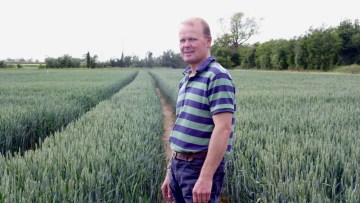Edward Vipond – Stop the spread
17.07.2019

Edward Vipond, Troston Farms, Bury St Edmunds, Suffolk
Edward Vipond manages a range of crops across 1500ha spread over 25 miles, on soils ranging from heavy clay to Breckland sands.
He is battling black-grass, mainly on heavy soils, but the weed can also be found to a lesser extent on lighter soils.
“The black-grass population hasn’t really reduced in the five years I have been here, so I felt I had to be more radical in what I do,” says Edward. “I tried forage rye to take seed off the field rather than risk it returning to the soil, which partially worked.
“I also tried spring beans, which dented the seed population, and now I’m looking at soya to delay sowing as late into the spring as possible to give us more time to control blackgrass flushes out of the crop.
“All these things are part of what has to be a long-term solution. I may need to be even more radical and may end up with grass leys in the future, taking a conservation crop or bringing in livestock in for a period. This might be attractive given the direction support payments are going.”
This season whole control has generally improved. Stacking of pre-ems based around Crystal®, followed quickly by Avadex® and timely applications of post-emergence herbicide did a good job.
However, seasonal influences are likely to have played a big part in that success, Edward acknowledges. He will continue to rely on a wide range of control strategies in the future.
“I look at crops and, based on what I see, there’s a whole list of things I am thinking about when it comes to managing the following crop. You have to keep an open mind to keep on top of black-grass.
“Should I shallow or deep till, or invert to bury the problem. What pre-em stack should I use, what post/peri strategy should I adopt? When should I drill, or should I delay and put in a spring crop? And, if I can see black-grass heading in early summer, I’m now willing to spray off those areas rather than let them return seed to the soil.
“When I see blackgrass heading in crops I do feel a sense of failure in that what I did clearly hasn’t worked. We need to aim for 96% control, and in practice that means almost nothing much showing in the field.
“You can think you’ve done a great job, but unless you get to that figure, black-grass will come back and bite you. In some fields we’ve done that, in others we haven’t. We have to keep striving until we achieve it in all fields.”


